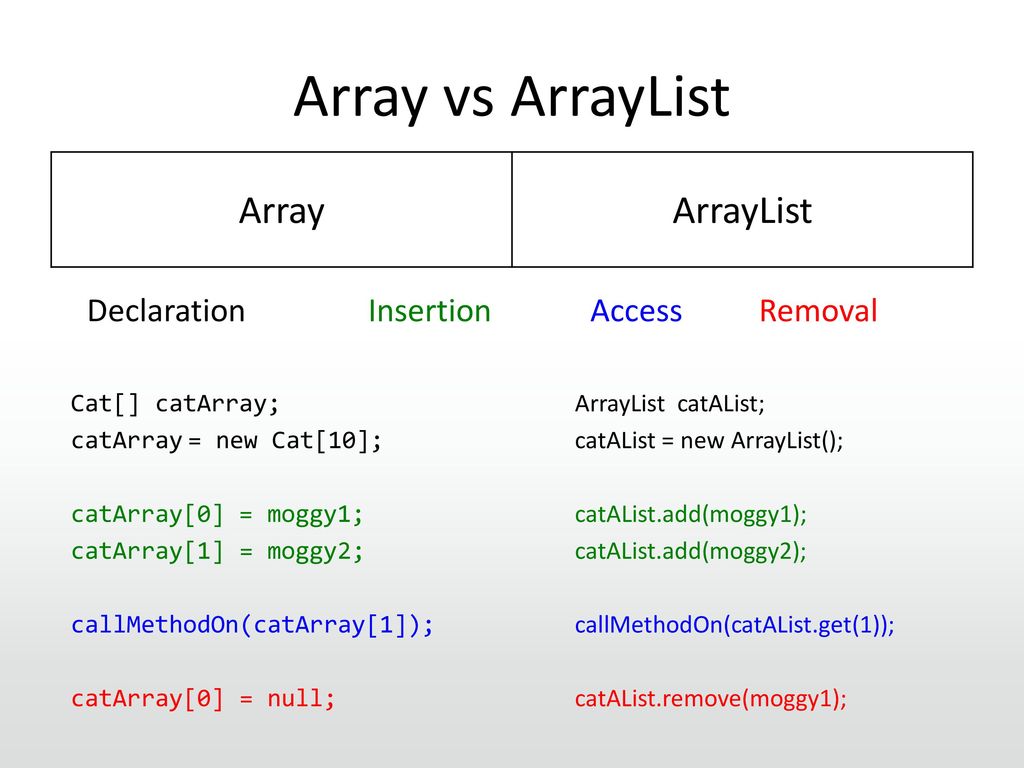

Talking about the drawbacks of ArrayList, then there is probably only one, and that is typecasting.

So it is a part of the Collections framework. ArrayList is and extension of the List Interface. The ArrayList is therefore much more widely used as compared to an Array in Java. Moreover you need not specify the size at the beginning of the initialization part. It provides for automatic resizing of the List.

On the other hand, the ArrayList is dynamic in nature. The Garbage Collector then has a tough time maintaining the memory for other resources. And if you initialize an array that is too long, then it results in wastage of precious memory of the heap. By using Array, there is comparatively less flexibility, as the size need to be known before hand.

The number of the rows is a must for any array, though the number of columns may be specified later. The size has to be defined at the initializing time of the array. In Java an Array is always of fixed size. Today I would be discussing the main difference between an ArrayList and an Array in Java.
#String vs array vs arraylist java code
To get the size of Array we use the length() method but in ArrayList we use the size() method to find the size of ArrayList.Welcome back again on Java Code Online. We can make an Array as multi-dimensional but an ArrayList is always single dimensional. In Array we add the element by use assignment operator (=), But in ArrayList, we add the element by use of add() method. To iterate an ArrayList we can use for loop, forEach loop, Iterator, List Iterator. We can Iterate the Array by use of for loop, forEach loop. Here JVM converts the int to Integer type. Here ArrayList is can take only Integer type of data. Primitive and non-primitiveĪn Array can hold primitive(int, float, double) and non-primitive(String or User-defined class) data type.īut some developers misunderstood it and think ArrayList can take primitive data type also. It is mandatory to provide the size of the Array.Īn ArrayList is automatically initialized by default size 10. InitializationĪn Array should be initialized by some value. So ArrayList restrict the different type of data in generic ArrayList. By use of the generic concept, JVM ensures the type safety at compile time. But we should try to get errors at compile time.ĪrrayList supports the generic concept, unlike Array. If you add any incompatible element into an array, the compiler throws ArrayStoreException at run time. GenericĪn Array can’t be generic, it can hold a different type of element that checks on run time. It automatically grows or shrinks when we add or remove elements. When we create an ArrayList it has default size i.e. It will throw ArrayIndexOutOfBoundException.Īn ArrayList has the dynamic size, it’s a growable array. If we try to add more elements than the size of the Array. The most popular difference between ArrayList and Array is size.Īn Array has fixed length and we can’t change the length after the creation of Array object. Before moving further, you should read the Array in javaand ArrayList in java. In this post, we will discuss the difference between ArrayList and array. In java ArrayList and array, both are famous data structure.


 0 kommentar(er)
0 kommentar(er)
